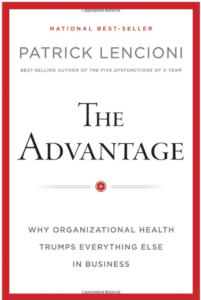Table of Contents
The Impact Of Healthy Work Environment On Corporate Success
Who wants to work in a toxic work environment? The answer is that probably no one does. Unfortunately, most do and perhaps don’t even realize it because it is so common.
In spite of the fact that it is well known that a healthy work environment means more profits for a company, it seems as if negativity and toxicity, which means fewer profits, have taken over.
Is it an inevitability in today’s world? No, it isn’t.
Can it change? absolutely, it’s a matter of a switch in the mind and leadership and ongoing training to back it up until the “virus” of positivity takes over the space created by letting go of negativity
What does it take? a strategic attitude shift from Negative to Positive.
To put it in other words “it’s time for the human race to couple with the positive” and divorce the negative…
A healthy work environment is extremely UNDERRATED in the consideration of overall corporate success, effectiveness, and financial profits.
What does it mean? Well simply, that the powers that be don’t really understand the powerful connection between a healthy work environment, which is primarily based upon the first principle of Humanity, and the overall success of the organization.
Simply put, workers are first human beings and not feelingless robots. Although this is very simple and the reader might think that they understand this premise, what they may not understand that this is scientific.
The Science of Humans Ignored By Leadership

If we know how to press “human buttons” as well as we know how to press computer buttons the return on investment (ROI) will be far higher than what we can imagine and we will experience what is referred to as a Healthy Work Environment.
“Pressing human buttons” is all about understanding the big picture of what humanity is and why it is the best strategy to work with, yes, even where business is concerned.
The fact is if a leader knows to treat humans like humans their organization will be more productive.
Who doesn’t know this fact? Almost everyone does…and yet another question arises…Who ignores this fact?
The majority of leaders ignore this fact and therefore do not excel in pressing the right buttons in their people, and that is because mostly they don’t press the right buttons in themselves.
That means that most leaders do not lead by example.
They say things but their actions are not in sync with their words. This, in turn, causes a lack of trust within the organization and certainly is counterproductive to having a healthy work environment.
Yet, and here is the strangest fact of all…. far more is invested in hard skills such as computers, technology, IT, spreadsheets, marketing strategy, and the like, than in Human-Technology!
By analogy, if you don’t take care of your own home in matters of maintenance, cleanliness, order, watering the plants, etc. how can you teach other people about maintaining their own lives. It’ll be empty words and will amount to hypocrisy.
And now you may ask yourself how many leaders claim to lead others when they themselves possess very few leadership skills?
It stands to reason, therefore that a healthy work environment is the number one parameter where productivity and efficacy are concerned, doesn’t it?
Creating A Healthy Work Environment

The creation of a healthy work environment is dependent on understanding people and applying the necessary NO vectors adjacently to the YES vectors to create a stable, orderly, friendly, happy, and professional workplace.
A place where the best of people can grow gradually by “Feeding” the workplace with positive attributes. As their negative attributes shrink gradually, this will gradually “Starve” these attributes. This, in turn, will eventually amount to a healthy work environment.
In all my years of training professionals and conducting hundreds of leadership seminars I have never encountered a problem that wasn’t a human-to-human problem.
It was never a problem of marketing or spreadsheets that detracted from true and growing success. It was always an underlying human issue that prevented the creation of a healthy work environment.
Considering Workers & Clients in a Healthy Work Environment

A healthy work environment depends on finding a healthy balance between the inside mechanics of an organization and its expression outwardly.
The two need to be in sync or there eventually will not be anything to sustain any outward growth.
When we see a tall building what we often forget is that its ability to be steady depends on the depth and durability of its foundations, which we don’t see.
So where a healthy work environment is concerned we have to look at the conduct of a company within, with its workforce (the foundations). Then we need to see what image it sells outwardly (its clients) and whether the two are coherent.
It is the consideration of a healthy work environment that will point us to the aspects that concern the mental and emotional well-being of the workforce as the main stakeholders of the organization.
Is It All About The Customer?
This may sound strange at first. We have grown accustomed to the old adage “the client comes first”, which in the right context is true.
This has been drilled into the mind of employees everywhere, for as long as we can remember but without the proper context.
The proper context with any and every healthy work environment is that what you do inwardly will reflect outwardly.
“The customer comes first after we look after our own responsibility inward, which is to guarantee a healthy work environment”.
A healthy work environment, therefore, is built upon solid foundations and human system fundamentals that can sustain outside pressure. These fundamentals are the parameters that make an organization healthy, which I address in this article.
As a curious side note, you may have noticed the similarity between the words “Healthy” and “Wealthy”. The only difference is H & W, which are the only two letters in the alphabet in front of “ealthy” that make sense. So without getting too philosophical one might think that there’s a connection.
From a practical standpoint, there’s a definite connection between the two, healthy organizations tend to be wealthy!
What Does It Take?
The 4 Healthy work environment Parameters Model
1 – Building A Cohesive Leadership Team

Without cohesive teamwork, the consideration of a healthy work environment cannot even be seriously considered.
If each person is to their own, if politics rule the day, if ego reigns supreme, if suspicion, division, and lack of trust define the workforce environment, then what are we talking about?
It may be a working group but it isn’t a team…and the difference is huge.
I think that’s as clear as daylight to anyone who will consider the issue.
Building a cohesive team takes work, effort, and “blood sweat, and tears” but it is by far the best long-term organizational strategy of success there is, yielding the best ROI, bar none!
Please understand that a team is a lot more powerful, effective, productive, inspired, and motivated than a bunch of individuals each doing only their own work, perfunctorily.
Most leaders know that!
However, few actually stop to ask what they need to do to create teamwork and certainly stop short of understanding the connection between Team & a healthy work environment.
A cohesive leadership team has a positive effect on the whole organization by lifting up morale and leading the way by being an example for other teams to follow suit.
It places the good of the whole, over the personal winning, thus building trust and cohesion.
Building a functional cohesive team as the first parameter of a healthy work environment is a strategic undertaking that pays huge long-term benefits…it’s not a “touchy-feely” thing.
Furthermore, at the end of the day, functional teams make a lot more money than random working groups.
2 – Creating Clarity

Creating clarity is about everyone in the organization “being on the same page”, otherwise known as “being in alignment”, which is one of the organizational buzz words that seldom receive the correct attention or training.
How can there be a healthy work environment without clarity? With people pulling in different directions while representing the same organization?
What alignment is about is creating clarity, and that is precisely why alignment is so rare in many organizations. Clarity as a strategy is lacking in almost every organization I have ever worked with.
Within the context of creating a healthy work environment & achieving organizational health, clarity of information, decision, policy, purpose, strategies cascading down from the leadership team is absolutely essential.
This clarity can only come out of a cohesive team and ensures that the people below are in unison as well. Otherwise, infighting, bias, and disorder of all kinds take over (haven’t we all seen it?)
It’s about receiving a clear and consistent message about priorities, and who does what, and what’s important.
In order to achieve a meaningful level of clarity, the leadership team has to be watertight in its uniformity & cohesion.
Otherwise, any cracks that exist within the leadership team will become far wider below within their reports, and cause chaos, confusion, ego fights, and all the stuff that makes a team dysfunctional.
A healthy work environment cannot even be considered in such a state of affairs!
Let’s be clear, I am not writing about the need for a Mission Statement here, because, unfortunately, mission statements miss the mark of achieving clarity.
They tend to be full of blather and meaningless terms that have no alignment value whatsoever.
The final resting place of many mission statements can usually be found neglected in company corridors, like an old decadent picture that no one pays attention to.
What I am writing about here is an ongoing strategy for achieving clarity. It’s quite different. To create clarity there are six core questions that must be visited, reviewed, and answered regularly.
These questions will be written here, however, the necessary in-depth explanation will require a targeted training of the subject at an off-site seminar, which needs a full two days of work, to begin with.
The 6 Questions that must be answered to create a healthy work environment:
- Why do we exist?
- How do we behave?
- What do we do?
- How will we succeed?
- What is most important, right now?
- Who must do what?
Just by looking at these questions you know right away that this is about the “nuts and bolts” of clarity, otherwise, it’s not real.
I am sure that you can immediately see that only a cohesive team working together can do justice to these questions and then communicate the results in a trustworthy way to everybody else.
The main aspects of the discipline of creating clarity are:
- The leadership team is in agreement, passionately so, about the reason the organization exists.
- Behavioral values that have been agreed to are adhered to.
- The leadership rallies around an agreed-to strategy that makes the organization different from the competition.
- There is a clear current goal that the leadership team rallies around.
- That the members of the leadership team understand the responsibilities and roles of each other and hold on to that commitment.
- There’s a regular summary, referencing, and review of all of the above.
One of the pitfalls of technology is the low level of interpersonal and crowd communication. This is prevalent throughout most organizations.
The results are hard to avoid.
Aspects like confusion, misinterpretation, lack of belief, miscommunication, …and the infamous effect of “Chinese Whispers”.
The ‘rule of thumb’ in communication is Repetition with Art.
What this means is that the message gets repeated over and over again, but artfully,
Simply put, the brain will remember the extraordinary. So it’s important to make the repetition interesting.
The adage is; tell them, tell them you told them,…and again…
Make sure that employees are clear about the six questions.
Do it by reminding your respective departments of these clarities.
It is essential to make sure that everyone leaves the leadership meeting totally clear about the agreements that were achieved.
These agreements must be conveyed to their respective departments, as soon as possible, close to immediately.
This type of reinforcing communication needs to be echoed back by employees with their agreement.
4 – Reinforce Clarity

Would you believe, we are still on about clarity?!
You would think that we have exhausted the subject. But we are just getting started, there’s so much more.
The aspect of reinforcing clarity is all to do with putting to practice the clarity that was achieved by answering the above 6 questions in all the human systems in the organization.
These 6 questions need to be present in the hiring process as a guiding light that serves in hiring the right people, which will be a good fit for the company.
This tends to work much better than many sophisticated hiring models.
If new prospects resonate well with the 6 questions, which, again, are core questions that define the company, and have a great holding sustaining power, then they are likely to be there for years to come.
Furthermore, when goal setting around the organization, as well as employee evaluations, are set around the core values and this includes also the reward systems, then you can grow into a healthy organization.
These measurements will serve to reinforce the clarity and more importantly prevent the hypocritical situation of spoken clarities that are not carried out.
In Conclusion
None of the above is complicated nor requires great smarts. But these are extremely important strategies that make an organization healthy and consequently very smart and profitable.
As the Life Coach for the Pros, I specialize in training and guiding professionals in these aspects. I train them on how to make great business decisions in challenging times.
I can teach you how to improve your bottom line profits by establishing a top line of organizational health. This in turn will consistently lift the bottom line of your profits, and productivity.
Eli Harari The Life Coach for Professionals™![]()



Pingback: Your Business & Team's Success Relies on These 5 Essential Roles - The Thinking Coach
Pingback: Nurturing Strong Teams: A Strategic Approach to Cohesive Team Building | Incredible Towns - Asheville, NC